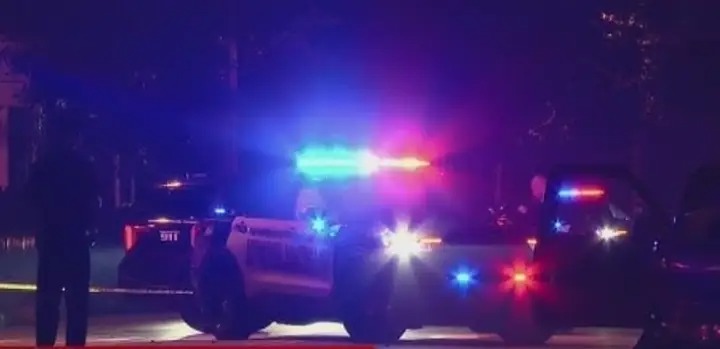A powerful tornado tore through Lake City, Arkansas, leaving a trail of destruction in its wake. The twister, which struck with little warning during the late afternoon, was captured in harrowing footage by locals, showing a dark, funnel-shaped cloud churning across the horizon. Trees were uprooted, power lines snapped, and debris scattered for miles as the storm barreled through residential areas. Emergency services rushed to the scene as daylight faded, with reports of damaged homes and displaced families flooding social media. Residents described the chaos as “unreal,” with many taking shelter in basements or interior rooms as the roaring winds rattled walls and shattered windows.
Local authorities swiftly activated disaster response protocols, urging residents to avoid damaged roads and downed electrical wires. Firefighters, police, and volunteer teams worked through the night to clear pathways and assess structural damage to critical infrastructure. Temporary shelters were set up in schools and community centers, offering food, water, and medical aid to those affected. The Red Cross and neighboring towns mobilized resources, emphasizing the importance of community solidarity in the storm’s aftermath. Officials cautioned that recovery efforts could take weeks, particularly for homes buried under fallen trees or stripped of roofs.
Eyewitness accounts painted a vivid picture of the tornado’s sudden ferocity. One lifelong Lake City resident recounted watching the sky turn an eerie green before the funnel descended, while another described the deafening noise as “a freight train tearing through the neighborhood.” Families who lost property expressed gratitude for their safety but voiced concerns about navigating insurance claims and rebuilding costs. Local businesses, including a beloved diner and a hardware store, suffered significant damage, leaving the town’s economic future uncertain. Community forums buzzed with offers of help, from donating supplies to hosting displaced neighbors.
Arkansas’s history with tornadoes adds weight to this event. The state lies within the notorious “Tornado Alley,” where warm, moist air from the Gulf collides with cooler northern fronts, creating ideal conditions for severe storms. While advancements in weather tracking have improved warning systems, the Lake City twister’s rapid formation highlighted lingering challenges in predicting such disasters. Meteorologists noted that climate variability could intensify these events, urging residents to stay vigilant during peak storm seasons. Past tragedies, like the 2008 Super Tuesday outbreak, remind locals of the long road to recovery ahead.
As cleanup efforts continue, Lake City’s spirit remains unbroken. Volunteers from across the region have joined hands to clear debris, distribute essentials, and offer emotional support to traumatized families. Fundraisers and donation drives are gaining momentum online, with advocates calling for state or federal aid to expedite rebuilding. While the tornado’s scars will linger, the community’s resilience shines as a testament to unity in crisis. For now, residents hold onto hope—and each other—as they work to restore their beloved town to its former strength.



